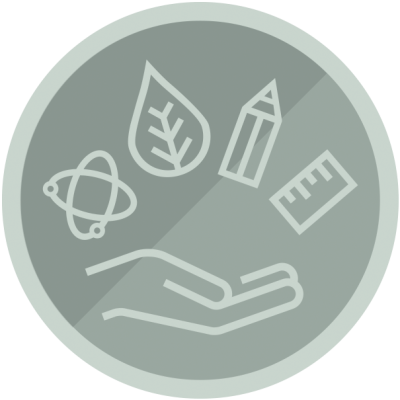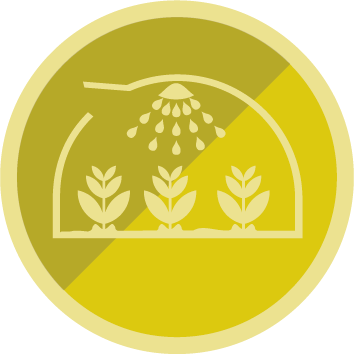
Eileen Boekestein
Environmental Education Coordinator
Michigan Department of Environment, Great Lakes, and Energy
Ada,
Roles at NAAEE
Languages
Interests
Certifications
Social Links
Read More
Like many environmentalists, Eileen (she/her) finds solace in getting outside. Hiking and bird watching are two of her interests. No agenda? No problem! That’s part of the fun. Eileen would love to visit the Patagonia region of South America one day, but she also loves exploring the wild parts of her home state, Michigan.
Eileen works as the Environmental Education Coordinator for the Michigan Department of Environment, Great Lakes, and Energy (EGLE). She brings with her years of cross-boundary work connecting science and governmental organizations with the public and is excited to share her experience facilitating multi-stakeholder community partnerships with others in the Fellowship. Eileen holds a BS in Environmental Biology from Cornerstone University and MS in Environmental Studies with an Environmental Communication emphasis from Green Mountain College. She’s a veteran public speaker, grant writer, and written word communicator, and she’s ready to share what she’s learned over time about how to be effective in conveying environmental information to the general public.
Eileen is new to EGLE as of November 2021, and her community action project is evolving! So far it includes participation in EGLE’s community engagement work with communities concerned about air quality across the state of Michigan. Agency staff are participating in several ongoing stakeholder engagement activities in Flint, Dearborn, and other Michigan communities. Eileen is listening to stakeholders to identify gaps in the existing educational and community support systems and working on ways to provide education, community science opportunities, and civic engagement resources that best support community members. One aspect of this project includes efforts to expand access to “Green and Blue” careers in the environmental sector, particularly for members of communities historically excluded from these spaces and career paths.
Michigan Air Quality Education to Action
The Project
Residents in environmental justice communities of Michigan have long advocated for clean air. The state’s air permitting process is designed to protect human health and the environment. However, the technicalities of air quality monitoring and permitting have not always been clearly articulated and members of the public may struggle to participate in the complex decision-making process. This project seeks to support Michigan communities in learning about their air quality and participating more authentically in decision-making activities.
As the statewide environmental education coordinator, I identify opportunities to listen and learn from affected communities to discover what knowledge gaps exist in both environmental education and civic engagement in air quality issues. Throughout the project, I will develop educational resources to fill existing gaps and help communities protect their health through civic action opportunities.
The Michigan Air Quality Education to Action program will provide support through:
- Listening to the concerns and needs of affected communities, particularly identified EJ communities
- Providing Learning resources to help communities learn about their air quality and what it means for their health
- Leveraging community assets to participate in public processes and advocate for change
Project Goals
Goal 1: Listening to the community
- Recommendations, concerns, questions, etc. from Stakeholder meetings
- Conversations with libraries, schools, and others regarding knowledge gaps and needs for support
- Conversations with programs already supporting communities in learning about air quality and taking action (environmental groups, local initiatives, etc.)
Goal 2: Create Learning resources based on identified needs
- Create Air Quality section on EGLE Classroom
- Collect existing resources (MEECS Air Quality, Air Monitoring Instruments video, Kids Ask EGLE video, Clean Air Action Day video, EHRA)
- EGLE Classroom video about air modeling
- Share video about EPA air sensor library loan program
- Create a 1-page guide requested by J. Dixon for AQD to explain Air Monitoring vs Air Modeling based on existing longer air monitoring handout
- Assist EPA to expand air quality sensor loan program with libraries – build/provide education materials to libraries, public, teachers, as requested/needed
- Support teachers/schools in implementing air quality education and in research projects as requested/needed
- Provide resources/events based on community input (Ex. Air Quality Learning Events, Air Sensor Toolbox resources, Story Maps w/ data, Citizen/Community science
Goal 3: Leveraging community assets and partnerships
- Update existing “What to expect in public meetings” document for virtual formats
- Make available on public participation page and in meeting registration information
- Continue to improve AQD documents with Plain Language review as requested
- Provide a platform for community voices – Proactive engagement around air quality concerns and questions, not just public comment on specific facilities/permits. The shape this takes depends on the outcome of listening sessions
- Provide resources for the public to contribute AQ data from sensors to a public database
User Activity
-
Eileen Boekestein liked EnviroSchool Webinar Series
-
Eileen Boekestein liked EnviroSchool Webinar Series
-





